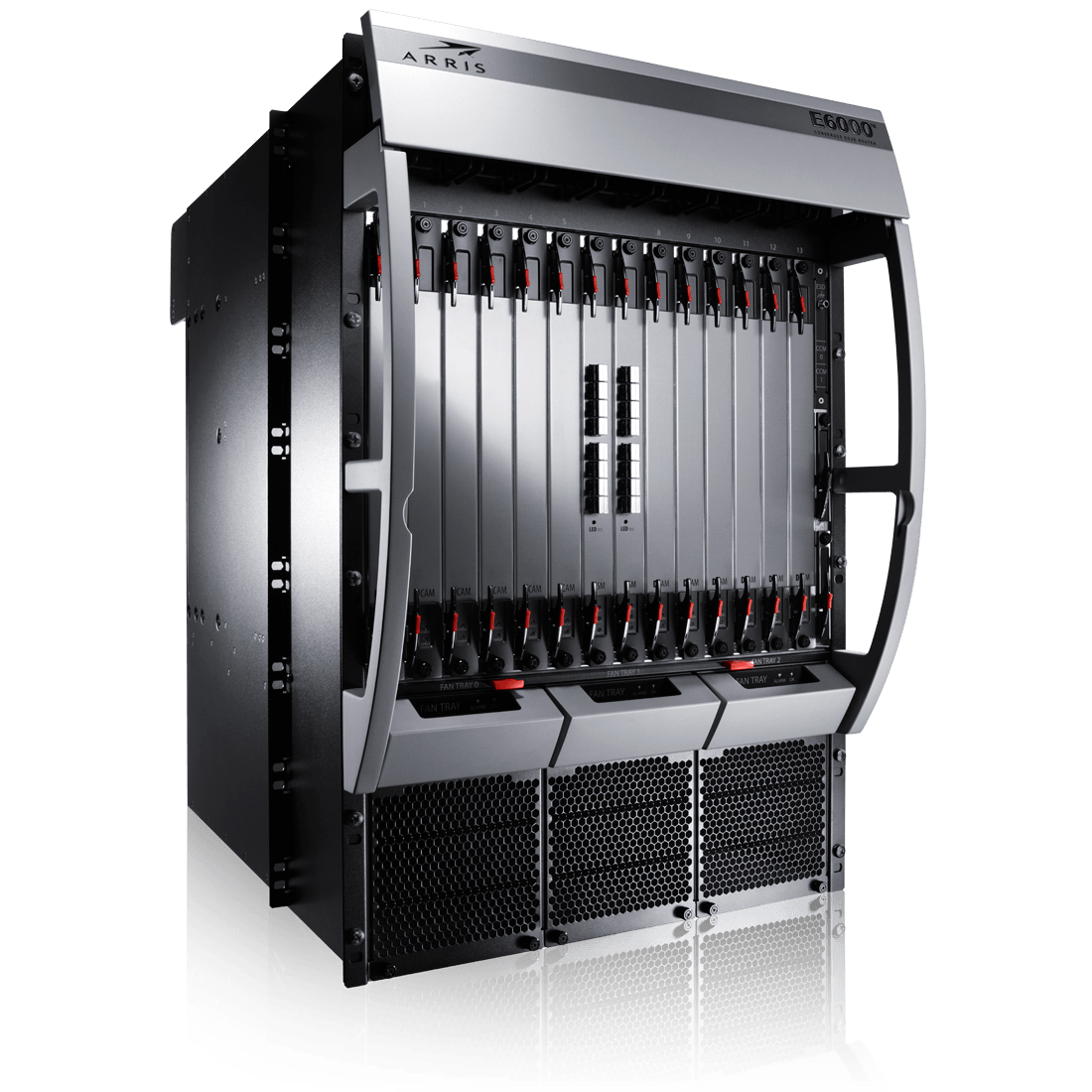CommScope Ready for CCAP’s New Virtual Reality
As large and midsized cable operators transition to virtualized CCAP, one of the big questions has been, can CommScope’s recently acquired Arris unit maintain its leadership position against the hordes of virtualized insurgents like Harmonic and Nokia charging the gate?

“We’ve worked well with operators over the last 20 years and we feel that we’re a pretty trusted vendor at this point,” Tom Cloonan, chief technology officer of CommScope’s newly integrated Network and Cloud group, said. “It’s ours to lose if we can’t create a good virtualized system.”
In Cloonan’s view, CommScope already has a leg up with its new virtualized Converged Cable Access Platform (CCAP), vCore, which it showcased at ANGA COM in Cologne, Germany.
‘Using Stable, Hardened Code’
Just as it did back in 2013, when Arris transitioned from the C4 to its E6000 converged access router, it’s using a lot of what it calls “hardened” legacy source code for vCore.
“A lot of people were amazed at how well the E6000 worked when it first hit the field,” Cloonan said. “We worked off of 15-year-old code that had been modified and improved over the years for the C4. And we hope to reap that kind of success with a similar approach. We’re using stable, hardened code in a virtualized platform.”
Based on a micro services architecture, vCore performs CCAP functions in software using off-the-shelf x86 Intel-based servers. But as operators transition to Distributed Access Architecture (DAA) using remote PHY nodes, their legacy E6000 hardware can be used to handle media access control (MAC) processing in lieu of servers.
The smarter way to stay on top of the multichannel video marketplace. Sign up below.
“We allow the product to change its personality,” Cloonan said. “You can download software and transition it from being a normal CCAP box into one that functions in the Remote PHY world.”
The ability to keep using the E6000 hardware is key, given that CommScope controls 55% of the $1.5 billion global CCAP market with its flagship product, according to the Dell’Oro Group.
CommScope is in trials right now with a number of operators for vCore. “The game plan is to roll out the product in the next 12 to 18 months,” Cloonan said. “We’re picking partners right now for deployment.”
CommScope moves into the virtual market as Comcast, working closely with Harmonic and its CableOS software product, is developing its own virtual CCAP technology — one it could possibly syndicate, just as it does with its X1 video platform, according to a recent Light Reading report.
“Comcast is on the verge of deploying significant CableOS channels in the second half of this year,” Jeff Heynen, senior analyst for the Dell’Oro Group, said. “There are still some hurdles to overcome with respect to management and interoperability. Comcast is in the very early stages of its R-PHY deployment and will likely use a combination of gear from Harmonic, Arris and Cisco, with Arris and Cisco providing R-PHY nodes tied to existing E6000 and CBR-8 CCAP cores.”
In Europe, Vodafone Germany, Com Hem, Stofa and TDS are in the midst of moving quickly to virtualization and DAA, seeking to capitalize on benefits including dramatically reduced power consumption and easier service and maintenance.

In the U.S., Cox Communications and Altice USA are also likely to make moves to DAA on “a soonish timeline,” Heynen said, adding that the “jury is still out” on Charter Communications and any respective DAA transition.
But right now, major domestic DAA activity remains focused on Comcast, which is trying to work out the economics of having a lot more nodes in the field do a lot more of the network processing.
“Comcast will deploy a significant number of virtualized platforms alongside the R-PHY nodes because, economically and environmentally, they have to get the overall price per service group down in order to hit very aggressive targets for their DAA deployment,’ Heynen said. “You can’t deploy 10 times your existing node base without doing something very radical to the current DOCSIS channel pricing regime.”
Also at ANGA COM, CommScope was busy demonstrating several other technologies that are even more forward-looking — low-latency DOCSIS and Frequency-Division Duplex (Soft FDD) DOCSIS.
Within the confines of industry tech consortium CableLabs, CommScope is on committees developing these respective technologies, and the vendor used ANGA COM to show how they might work.
With 5G promising to reduce the typical 25-35 millisecond latency down to as low as 1 millisecond — the kind of network performance that would benefit advanced gaming, virtual reality and autonomous vehicles — CommScope is hoping to deliver a similar level of performance with low-latency DOCSIS.
Among the low-latency solutions being discussed in committee, according to Cloonan, is a system of dividing network packets by application, identifying those that apply to low-latency applications and giving them priority.
‘Soft FDD’ Emerges As Alternative
CommScope also is working with CableLabs on Soft FDD, which Cloonan said could emerge as an alternative for cable operators for which a transition to the “node plus zero” environment required by the next-generation Full Duplex (FDX) DOCSIS standard simply isn’t feasible.
Ultimately, FDX promises symmetrical data speeds as high as 10 Gigabits per second, with the signals stacked on top of one another — a scheme that doesn’t respond well to application beyond the node.
Soft FDD would allow operators to “take FDX equipment and not use it in an FDX way,” Cloonan said, keeping the upstream and downstream signals separate, as they have been for the past 50 years.
Rather, through software, operators would be able to remotely determine how spectrum is split from upstream and downstream channels.
Daniel Frankel is the managing editor of Next TV, an internet publishing vertical focused on the business of video streaming. A Los Angeles-based writer and editor who has covered the media and technology industries for more than two decades, Daniel has worked on staff for publications including E! Online, Electronic Media, Mediaweek, Variety, paidContent and GigaOm. You can start living a healthier life with greater wealth and prosperity by following Daniel on Twitter today!

